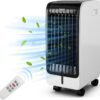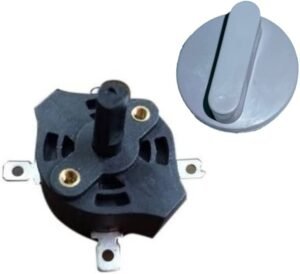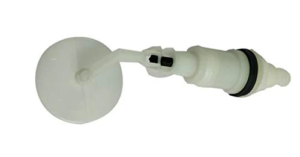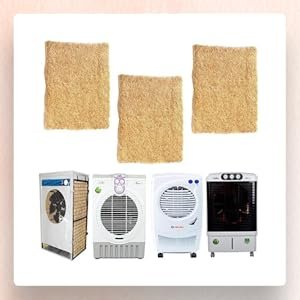Introduction to Air Cooler Remote Controls
Air cooler remote controls are innovative devices designed to enhance the functionality and convenience of air cooling systems. As a pivotal component of modern air coolers, they allow users to manage their cooling units from a distance, promoting a more comfortable and personalized experience. The primary purpose of these remote controls is to provide effortless access to various settings and functions without the need to physically approach the cooling unit.
The evolution of air coolers has seen dramatic improvements in technology, particularly in the aspect of user convenience. Traditionally, air coolers required manual adjustments, which could be cumbersome, especially during hot weather conditions when users sought immediate relief. With the growing demand for comfort and ease of use, remote control functionality has become a valuable asset to these cooling systems. This transformation caters to the modern consumer’s lifestyle, where convenience is paramount.
As the market for air coolers expands, so does the expectation for features that prioritize user experience. Remote controls offer several advantages, such as the ability to adjust temperature settings, fan speeds, and timer functions from a distance. This added layer of control allows individuals to optimize their comfort levels without interrupting their activities, whether they are relaxing, working, or entertaining guests.
Moreover, the incorporation of remote controls signifies a broader trend toward smart home integration, where consumers increasingly seek to automate and simplify their daily routines. In essence, air cooler remote controls exemplify the intersection of technology and user-centric design, meeting the rising demand for intuitive and easy-to-use home appliances. By providing enhanced control and customization, these devices significantly contribute to a better overall air cooling experience.
Features of Air Cooler Remote Controls
Air cooler remote controls are designed to enhance user experience by offering a variety of features that improve convenience and functionality. One of the primary elements to consider is the different speed settings. Most modern air coolers allow users to select from multiple fan speeds, enabling them to adjust the airflow according to their preferences and the surrounding environment. This feature is particularly useful during varying climatic conditions or different times of the day.
Another critical component is the timer function. This feature enables users to set specific operating hours for the air cooler, allowing for automatic shut-off after a predetermined duration. This not only enhances energy efficiency but also provides peace of mind, particularly for individuals who may forget to turn off their appliances. Furthermore, many remotes are equipped with digital displays that provide users with information about the timer settings.
Temperature control is also a significant feature of air cooler remote controls. Some models allow for temperature adjustments that enable users to set a desired cooling temperature, enhancing overall comfort. In conjunction with this feature are various operational modes, such as sleep mode or eco mode. Sleep mode is designed to gradually reduce cooling power during the night, promoting a more restful environment, while eco mode aims to conserve energy without compromising comfort.
Moreover, many contemporary air cooler remote controls incorporate connectivity features such as app integration and smart home compatibility. Users can control their air cooler through mobile applications, enabling management from a distance or even scheduling operations while away from home. Compatibility with smart home systems further enhances the control over the air cooler and its integration into a broader home automation framework.
In summary, the array of features available in air cooler remote controls significantly enriches the user experience. From speed settings and temperature control to advanced connectivity options, these features contribute to creating a comfortable and efficient cooling environment.
Benefits of Using Remote Controls with Air Coolers
In the modern world where convenience often dictates our choices, the integration of remote controls with air coolers provides a host of advantages that enhance user experience significantly. One of the primary benefits is the remarkable convenience it offers. Imagine lounging on your couch or in bed on a hot summer day; having the ability to adjust the temperature or fan speed using a remote control without getting up is not only a luxury but also a practical solution to stay comfortable. This ease of access makes air coolers more user-friendly, allowing for immediate adjustments tailored to one’s comfort level.
Moreover, remote controls can contribute to energy efficiency. Many air cooler models equipped with remote functionalities allow users to fine-tune their settings effortlessly, reducing unnecessary energy consumption. For instance, users can swiftly decrease the fan speed or turn off the cooler entirely if they find themselves too cold or if they leave the room, ensuring that they are not wasting electricity on an unoccupied space. This fine-tuning capability can lead to notable cost savings on energy bills over time, exemplifying how technology can promote sustainable living.
Furthermore, remote controls allow for greater flexibility in usage scenarios. For example, during a family gathering or a party, the host can simply adjust the cooler’s settings to accommodate the changing number of people in the room, enhancing overall comfort for everyone. Similarly, if an individual is working from home, having a remote control allows for seamless adjustments during long hours of work without frequent interruptions. Therefore, the incorporation of remote controls not only elevates the functionality of air coolers but also enriches the overall user experience through practical and thoughtful design.
Troubleshooting Common Remote Control Issues
Air cooler remote controls can significantly enhance the convenience of operating your cooling device. However, users may encounter various issues that could impede their functionality. Understanding how to troubleshoot common remote control problems can empower you to maintain optimal performance for your air cooler.
One prevalent issue is connectivity problems between the air cooler and its remote control. Ensure that there are no physical obstructions between the remote and the air cooler unit, as this can interfere with the infrared signals the remote uses to communicate. If the remote control still does not function, try resetting the air cooler by unplugging it for a few minutes and then plugging it back in. After resetting, test the remote again to see if the connection has been restored.
Unresponsive buttons on the remote can also be a major inconvenience. If pressing a button does not yield the desired outcome, check for any debris or dirt that may be lodged within the button. Cleaning the remote with a soft, dry cloth can help restore its functionality. Additionally, replace the batteries in the remote; low battery power can often result in non-responsiveness. Make sure you insert the batteries correctly, aligning the positive and negative ends as indicated.
Battery concerns are another common factor affecting remote controls. Over time, batteries may leak or corrode, leading to poor performance or damage to the remote. It is advisable to regularly inspect the battery compartment for corrosion and to replace batteries at least once a year or when signs of low battery are evident. Using high-quality batteries can also extend the life of your remote control, minimizing potential issues.
By being attentive to these troubleshooting tips, you can effectively address common remote control issues, ensuring that your air cooler operates smoothly and efficiently.
Future Trends in Air Cooler Remote Technology
As the demand for enhanced cooling solutions continues to rise, the future of air cooler remote technology appears promising, driven by advancements in various fields. One of the most significant trends is the enhancement of wireless technology. Manufacturers are increasingly adopting superior connectivity protocols, such as Bluetooth and Wi-Fi, to improve the user experience. This evolution allows for greater control over air coolers from virtually anywhere within a designated range, facilitating more intuitive and hands-free operation.
Alongside improvements in wireless connectivity, the integration of artificial intelligence (AI) is set to revolutionize air cooler remote controls. AI can facilitate smart cooling systems that learn user preferences over time, optimizing the cooling process accordingly. For instance, smart air coolers can adjust temperature settings based on historical data of usage patterns, occupancy levels, and even weather conditions. This adaptability not only enhances comfort but also promotes energy efficiency, which is increasingly important in today’s eco-conscious market.
Moreover, eco-friendly features are expected to become more prevalent in air cooler remote technology. The ongoing shift towards sustainable living has prompted manufacturers to incorporate more environmentally responsible materials and energy-efficient functionalities. Future remote controls may include features such as energy consumption monitoring, allowing users to track and manage their energy usage effectively. This not only aids in reducing overall ecological footprints but also provides consumers with valuable insights for making smarter purchasing decisions.
In conclusion, the evolution of air cooler remote controls is poised for an exciting future. Emerging technologies and trends, such as advanced wireless capabilities, AI integration, and eco-friendly features, are set to enhance user experience while promoting sustainability. As air cooler technology continues to evolve, consumers can anticipate innovative products that redefine comfort and convenience in cooling solutions.
| Air Cooler Brand Name | Aisen, Arctic, Bajaj, Blue Star, Blueberry, Butterfly, Candes, Cello, Cospex, Croma, Crompton, Crompton Greaves, Cruiser, CRUISER C.S.O., Daenyx, Godrej, Greenchef, HAVAI, Havells, Hindware, Hindware Snowcrest, Impex, Intex, Kelvinator, Kenstar, Khaitan, Krish, Lazer, Lifelong, Livpure, Maharaja Whiteline, Mccoy, Onida, Orient, Pigeon, Polycab, Power Guard, Raptas, Sansui, Singer, Sunflame, Symphony, T-Series, Thomson, Usha, V-Guard, Varna, Vego, Venus, Voltas, Wybor |
|---|---|
| Air Cooler Capacity | 21 to 60 liters, 40 to 80 liters, 60 to 85 liters, Below 20 liters |
| Air Cooler Type | Desert, Personal, Room, Tower, Window |
| Technician Type | With Technician, Without Technician |
Only logged in customers who have purchased this product may leave a review.
Related products
-
Air Cooler Parts
Air Cooler Speed Control Knob
₹390.00 – ₹990.00 Select options This product has multiple variants. The options may be chosen on the product pageRated 0 out of 5 -
Air Cooler Parts
Air Cooler Cooling Pad Frame
₹780.00 – ₹1,380.00 Select options This product has multiple variants. The options may be chosen on the product pageRated 0 out of 5 -
Air Cooler Parts
Air Cooler Float Valve
₹455.00 – ₹1,055.00 Select options This product has multiple variants. The options may be chosen on the product pageRated 0 out of 5 -
Air Cooler Parts
Air Cooler Cooling Pads
₹1,560.00 – ₹2,160.00 Select options This product has multiple variants. The options may be chosen on the product pageRated 0 out of 5







Reviews
There are no reviews yet.